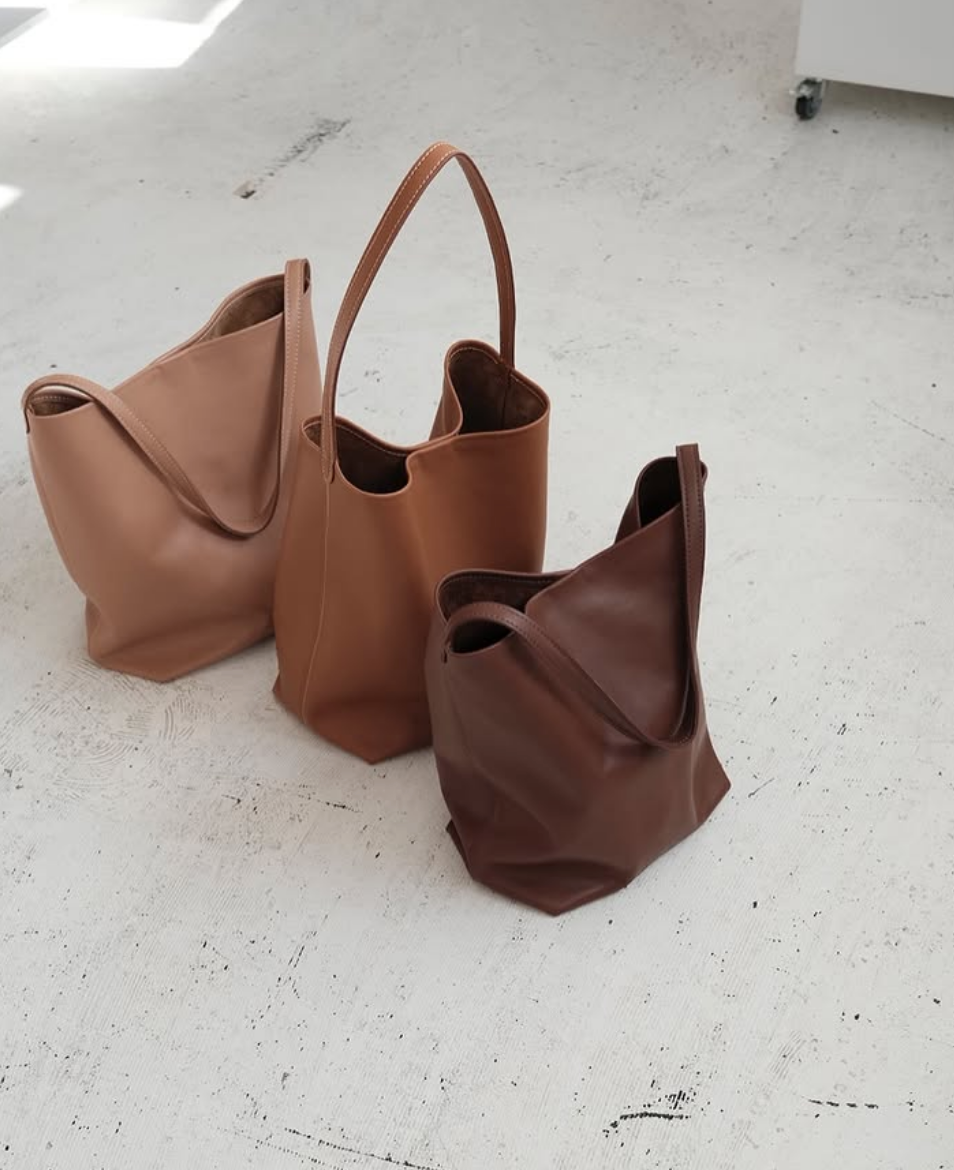Article: Faux vs. Genuine Leather: Understanding the Differences

Faux vs. Genuine Leather: Understanding the Differences
In the world of fashion and accessories, leather has long been prized for its durability, timeless appeal, and adaptability. With the rise of faux leather options, many people find themselves wondering which choice is best. While faux leather often offers an attractive price point and some stylish designs, genuine leather is celebrated for its natural quality and longevity. In this guide, we’ll explore the key differences between faux and genuine leather, highlighting how craftsmanship and material quality impact not only how a product looks and feels but also its overall sustainability.
Durability and Ageing Gracefully
One of the main distinctions between faux and genuine leather lies in how each material ages over time. Faux leather, typically made from synthetic compounds like PVC or polyurethane, often looks great initially but tends to wear out with use, eventually cracking or peeling. Genuine leather, however, is valued for its durability and the way it develops a unique patina with age. This natural ageing process gives genuine leather products a sense of character that many people appreciate, and it means that a well-made leather item can last for years, even decades, with proper care.
One of the main distinctions between faux and genuine leather lies in how each material ages over time. Faux leather, typically made from synthetic compounds like PVC or polyurethane, often looks great initially but tends to wear out with use, eventually cracking or peeling. Genuine leather, however, is valued for its durability and the way it develops a unique patina with age. This natural ageing process gives genuine leather products a sense of character that many people appreciate, and it means that a well-made leather item can last for years, even decades, with proper care.
Environmental Impact: Natural vs. Synthetic
In terms of sustainability, genuine leather and faux leather differ significantly. Faux leather is made from petroleum-based materials, which require chemical processing and produce emissions during manufacturing. These synthetic materials don’t biodegrade easily, contributing to long-term waste. Genuine leather, when sourced responsibly, has a lower environmental footprint, as it’s a natural material that biodegrades more easily at the end of its life. By choosing products made from responsibly-sourced leather, consumers can reduce the impact of waste and help support sustainable practices.
In terms of sustainability, genuine leather and faux leather differ significantly. Faux leather is made from petroleum-based materials, which require chemical processing and produce emissions during manufacturing. These synthetic materials don’t biodegrade easily, contributing to long-term waste. Genuine leather, when sourced responsibly, has a lower environmental footprint, as it’s a natural material that biodegrades more easily at the end of its life. By choosing products made from responsibly-sourced leather, consumers can reduce the impact of waste and help support sustainable practices.
Supporting Local Agriculture and Sustainability
In South Africa, genuine leather is often a byproduct of the local agricultural industry, which means that by choosing locally sourced leather, consumers are supporting a sustainable supply chain and reducing waste within the livestock sector. Utilising leather that would otherwise be discarded is an important part of a responsible approach to materials. Supporting locally sourced leather not only boosts the South African economy but also reduces the environmental impact associated with transporting goods from abroad. This practice emphasises the importance of quality and sustainability, while supporting the agricultural community here at home.
In South Africa, genuine leather is often a byproduct of the local agricultural industry, which means that by choosing locally sourced leather, consumers are supporting a sustainable supply chain and reducing waste within the livestock sector. Utilising leather that would otherwise be discarded is an important part of a responsible approach to materials. Supporting locally sourced leather not only boosts the South African economy but also reduces the environmental impact associated with transporting goods from abroad. This practice emphasises the importance of quality and sustainability, while supporting the agricultural community here at home.
Craftsmanship and the Tactile Difference
Genuine leather’s appeal also lies in the skill and craftsmanship involved in its preparation and use. Leather-working is a traditional art that requires expertise and careful attention to detail. The result is a material with rich texture, natural variations, and a distinct feel that can’t be easily reproduced with synthetic materials. Faux leather, by contrast, is manufactured in a way that often produces a uniform look, but lacks the depth and tactile appeal of the real thing. This makes genuine leather products unique and gives each item a personal quality that can’t be manufactured.
Genuine leather’s appeal also lies in the skill and craftsmanship involved in its preparation and use. Leather-working is a traditional art that requires expertise and careful attention to detail. The result is a material with rich texture, natural variations, and a distinct feel that can’t be easily reproduced with synthetic materials. Faux leather, by contrast, is manufactured in a way that often produces a uniform look, but lacks the depth and tactile appeal of the real thing. This makes genuine leather products unique and gives each item a personal quality that can’t be manufactured.
Longevity and Reducing Consumption
Choosing items that last is a simple way to reduce waste over time, and genuine leather offers a clear advantage in this regard. Since it remains resilient and ages well, a genuine leather product doesn’t need to be replaced as frequently as faux leather, which can wear out more quickly. The longer lifespan of genuine leather products aligns with a mindful approach to consumption, where quality is valued over quantity and the need for frequent replacement is minimised.
Choosing items that last is a simple way to reduce waste over time, and genuine leather offers a clear advantage in this regard. Since it remains resilient and ages well, a genuine leather product doesn’t need to be replaced as frequently as faux leather, which can wear out more quickly. The longer lifespan of genuine leather products aligns with a mindful approach to consumption, where quality is valued over quantity and the need for frequent replacement is minimised.
The choice between faux and genuine leather is ultimately a personal one, influenced by lifestyle, values, and preferences. Understanding the differences in durability, environmental impact, and local sustainability can help you make an informed decision. By choosing genuine leather from local sources, you’re not only opting for quality and longevity but also supporting South Africa’s agricultural industry in a responsible, eco-conscious way.

